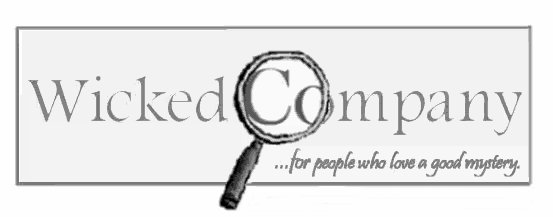September 2001 interview with Brian Pinkerton conducted for the Wicked Company Book Club
Reprinted here with kind permission of Claudia McCants

Tell us a little about your writing background…how you got started, etc.
I have been fascinated by books since I was very young — I used to write and illustrate booklets of stories and cartoons. My grandfather was a newspaper publisher, and we always had pads of paper around the house. By junior high, I was writing plays for the drama class. At the University of Iowa, I took undergraduate classes of the Iowa Writers Workshop where my instructors included Esquire fiction editor Rust Hills. I received my master’s degree from Northwestern University’s Medill School of Journalism. Over the years, I’ve channeled my writing into novels, short stories, screenplays and comic strips. I mix it up so I don’t get bored.
Tell us about “The Ruts”
The Ruts is a comic strip I created about a goofy family. I enjoy writing gags and then bringing them to life through cartoons. Comic strips require the tightest possible writing and economy of words. I posted about 135 Ruts strips on my web site. They have appeared other places, too, online and in print.
Tell us about screenwriting, and in particular about, “Perfect Order.”
Screenplays are fun because they are so heavily focused on story and character. The writing is very visual, trimmed to the bone, and moves quickly. It’s fiction for people with short attention spans. I’ve written 5 scripts in the past 12 years. I’ve had agents in Los Angeles, met with producers and experienced success in contests … but nothing has been produced yet.
My most recent screenplay is PERFECT ORDER, a true-life military drama cowritten with John Zoppi. It’s based on the story of a young sailor who witnesses a crime on an aircraft carrier and is pursued by unknown enemies. I don’t want to say too much … it’s still circulating.
What is the most satisfying part of being a writer?
I enjoy storytelling and creating something out of nothing. I like to craft entertainment for myself and others that provokes laughter, thrills or suspense — or, better yet, a combination of all three.
What is the hardest part about being a writer?
Finding the time to write gets harder and harder. But if there’s a will, there’s a way.
Do you write full time? If not, what else do you do?
I have a “real job” that requires a lot of business writing. The fiction writing is a hobby — I enjoy it, but I don’t make much money from it. Few people do.
When is your favorite time to write, and where is your favorite place to write?
Late at night, when it’s dark and distractions are at a minimum, is a good time to disappear into my imagination. I will often play music while I write — as long as it isn’t distracting or heavy on lyrics. I scribble notes all the time when I’m working on a project — including in the car, on the steering wheel (stopped at red lights, of course!)
What inspired you to write KILLING THE BOSS?
In 1985, I wrote a short story that was published in MIKE SHAYNE MYSTERY MAGAZINE. The narrative was created out of documents from a police investigation — letters, receipts, a student essay, etc. I had a lot of fun with this approach and wanted to revisit it for a novel. But I couldn’t decide on a storyline until more than 10 years later, after working in a corporate environment. A corporate environment seemed perfect for this gimmick because so much of the communication that takes place in business is not face-to-face: emails, faxes, memos, newsletters, voice mail, and so on. Plus, I’m very familiar with corporate environments — it gave me an opportunity to satirize my own business communications experience.
The format for KILLING THE BOSS is intriguing and has certainly got my attention. What inspired you to write the book this way and why? Was it harder to write in this format?
I will never write another book this way. It was much more complicated to sustain for a novel than I ever could have anticipated. I was juggling points of view; scrambling the chronology; weaving a 400-page story and layered characters out of non-narrative elements… It required me to map everything out on hundreds of index cards. On the plus side, each narrative element was short and quick to write. I could draft several in one day. I’m proudest that I created a coherent story out of such a wild concept. No one has told me that the book is confusing. It all comes together by the end; but you have to fit the pieces together in your head as you read.
Do you belong to any writing groups that you want to tout, or have you won any awards?
Three of my screenplays finished in the top 2 percent of a screenwriting competition run by the Academy of Motion Picture Arts and Sciences (the Oscars people). I won a “Best of Issue” for a short story in a literary magazine at the University of Iowa.
How long did it take you to write KILLING THE BOSS?
Roughly 10 months for a solid, complete first draft, and then another year for sporadic editing and revisions. I was doing other projects at that time, in addition to the demands of a full-time job.
Is there anything else you would like to convey to your readers?
I hope my works can provide some entertainment and escapism in these difficult times. I will keep my web site updated with news of my latest creative projects. Thank you for your interest.





